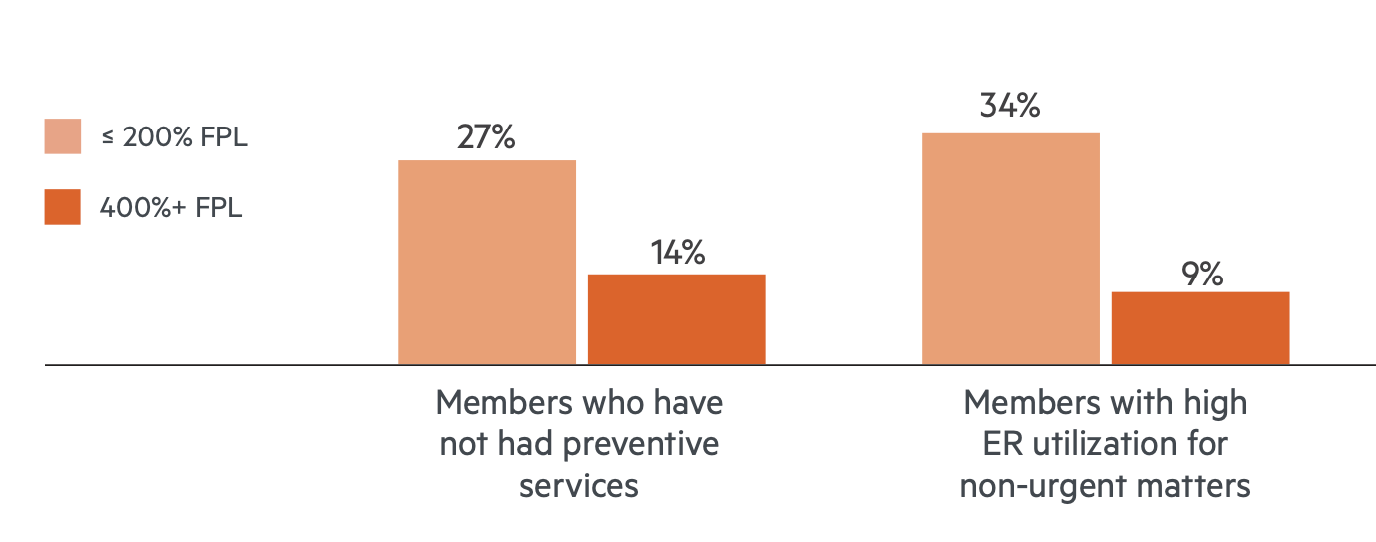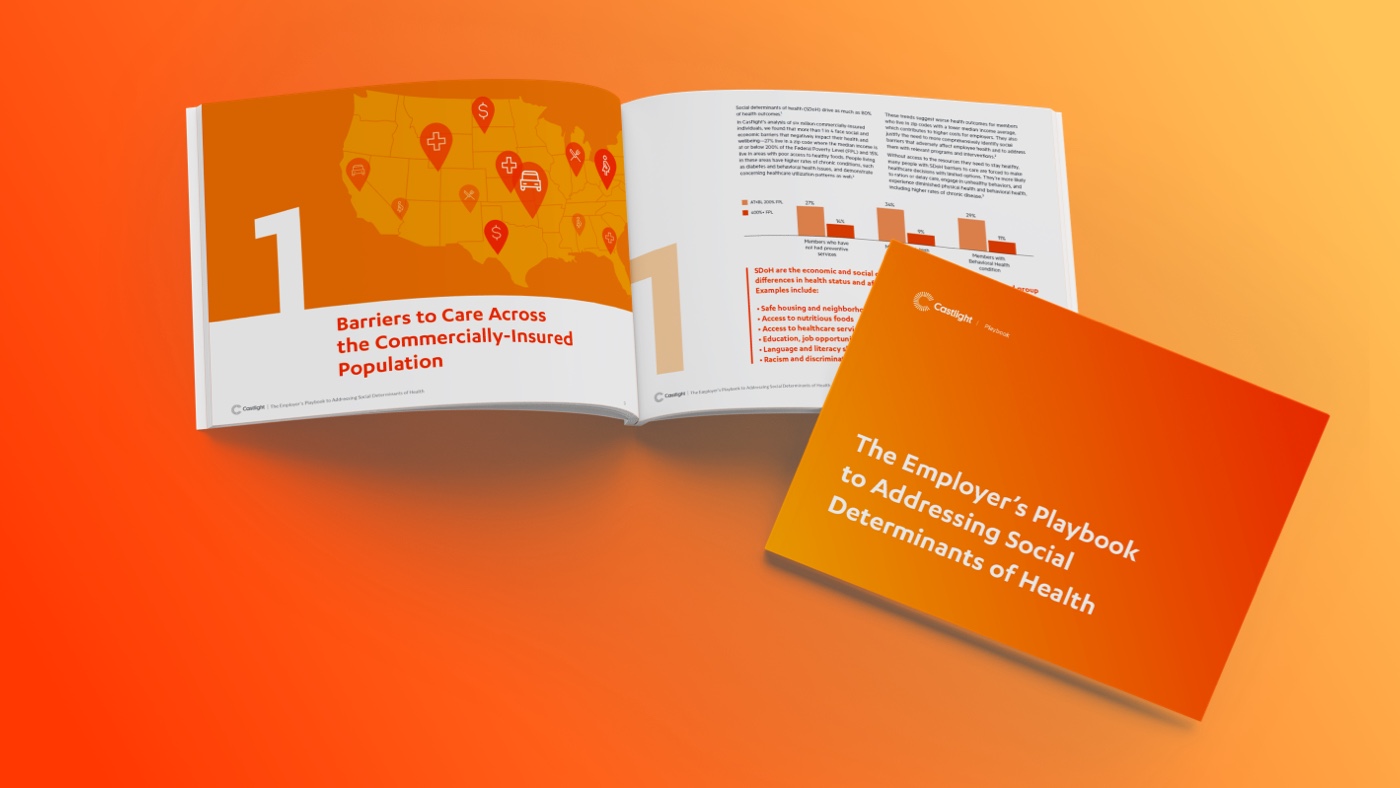Did you know? Social determinants of health (SDoH) can drive as much as 80% of health outcomes.
When it comes to considering populations impacted by SDoH, however, policy makers and healthcare leaders have largely focused on Medicaid populations. But the truth is, many commercially-insured individuals also face social and economic barriers that impact their health and wellbeing.
In fact, in an analysis of six million commercially-insured individuals, Castlight found that more than one in four were impacted by SDoH—27% live in a zip code where the median income is at or below 200% of the federal poverty level (FPL) and 15% live in areas with poor access to healthy foods. People living in these areas have higher rates of chronic conditions—including behavioral health conditions—and demonstrate concerning healthcare utilization patterns.

Download the playbook to start addressing SDoH.
Unfortunately, these trends suggest worse health outcomes for members who live in zip codes with a lower median income average, which contributes to higher costs for employers. They also justify the need to more comprehensively identify social barriers that adversely affect employee health and to address them with relevant programs and intervention.
Without access to the resources they need to stay healthy, many people with barriers to care driven by SDoH are forced to make healthcare decisions with limited options. They’re more likely to ration or delay care, engage in unhealthy behaviors, and experience diminished physical health and behavioral health.
“The companies that have sustained success in the market are those that have taken the time to ensure they have a healthy and capable workforce across all segments of their population.”
Employers are in a unique position to help these vulnerable populations. While many employers already provide generous benefits, lack of engagement with employer-sponsored benefits programs continues to be a challenge. In addition to trying to increase employees’ awareness and understanding of the programs and resources currently available to them, employers can further reduce barriers to care by revisiting their overall benefits design, wellbeing program offerings, physical environment, wages, and organizational policies.
“Over time, the role of employer-sponsored benefits has evolved to be more than just financial protection or a component of an employee’s compensation package. Those things are important, but these days they’re the table stakes for employers as they seek to compete and win in the marketplace. They’re not a competitive advantage anymore,” says Erik Sossa, president of E.A. Sossa Consulting and strategic advisor to Castlight.
“In my work over the years,” Sossa says, “the companies that have sustained success in the market are those that have gone beyond that and taken the time to ensure they have a healthy and capable workforce across all segments of their population. Being able to identify and address barriers to care is critical when competing in the context of the new market forces.”
To help employers address SDoH among their people, we’ve put together a playbook that includes the following three-part framework:
- Benefits plan design
- Effective communications
- Employer brand reputation and company culture
When it comes to SDoH and benefits programs more generally, there’s no one-size-fits-all solution for employers. However, we hope this playbook helps them more easily determine what their employees need most and how they can address those needs—which, ultimately, can help them close gaps in care, improve health outcomes, reach vulnerable communities, increase engagement with health benefits programs, build and retain a competitive workforce, and more.



